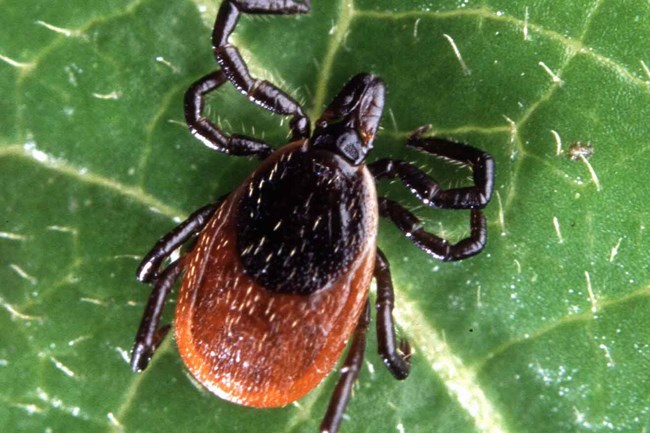13 Apr. 2021. A study with lab mice shows an experimental vaccine with engineered bacteria produces antibodies and protects against microbes causing Lyme disease. A team from the biotechnology company Intravacc in Bilthoven, The Netherlands, and University of Amsterdam medical center describe the vaccine and test results in the 1 April issue of the journal Vaccine.
Lyme disease is an infection from Borrelia burgdorferi bacteria spread by bites from deer and black legged ticks already infected by the bacteria. Symptoms include fever, headache, fatigue, and a characteristic skin rash, and if caught quickly can be treated with antibiotics. If left untreated, however, Lyme disease can spread to the joints, heart, and nervous system. Centers for Disease Control and Prevention says some 30,000 cases of Lyme disease are reported each year in the U.S., while Intravacc cites data showing an estimated 85,000 cases per year in EU countries.
Intravacc develops vaccines with a technology that produces spherical containers resembling outer membranes of bacteria. The company generates these outer membrane vesicles, as they’re called, from meningococcal bacteria, engineered for vaccine delivery and rendered non-toxic to humans. Intravacc says its outer membrane vesicles act as a delivery vehicle for vaccines, as well as an adjuvant or booster. For its Lyme disease vaccine, the outer membrane vesicle expresses the outer surface protein of Borrelia burgdorferi to invoke an immune response against the bacteria.
High concentrations of antibodies
Researchers from Intravacc and University of Amsterdam injected groups of eight lab mice with the Intravacc Lyme disease vaccine, or empty outer membrane vesicles or OMVs for comparison, in three installments each 14 days apart. The results show mice receiving the Intravacc vaccine had high concentrations of anti-Borrelia immunoglobulin G antibodies, while the comparison mice with empty vesicles produced no antibodies.
The team also vaccinated groups of eight mice with the Intravacc vaccine or empty outer membrane vesicles, then injected the mice under the skin, similar to tick bites, with live Borrelia bacteria. After 20 days, blood and organs from all but one of the vaccinated mice showed no Lyme disease infections, while all of the comparison mice developed infections. In addition, vaccinated mice had lower Borrelia bacterial loads than the comparison mice.
The authors conclude the tests show the Intravacc vaccine generates antibodies against Borrelia bacteria and protects against Lyme disease infections in mice, but further preclinical tests are needed with actual tick bites rather than simulated needle injections. Nonetheless, say the authors, the vaccine appears promising for eventual human trials.
“We show that it is possible to couple OMV to external antigens,” says Intravacc CEO Jan Groen in a company statement, “and that the bacterium can also be modified to express the antigens.” Groen adds that “the platform can be utilized for vaccine development for virtually any disease.”
More from Science & Enterprise:
- Test Vaccine Protects Against Wide Coronavirus Range
- Vaccine Spin-Off Raises $168 Million in New Funds
- Carb-X Funds Vaccine Against Resistant Staph Infections
- Moderna Developing Flu, HIV, Nipah Vaccines
- Small Biz Grant Funds Heat-Stable Multi-Virus Vaccine
* * *


 RSS - Posts
RSS - Posts
You must be logged in to post a comment.